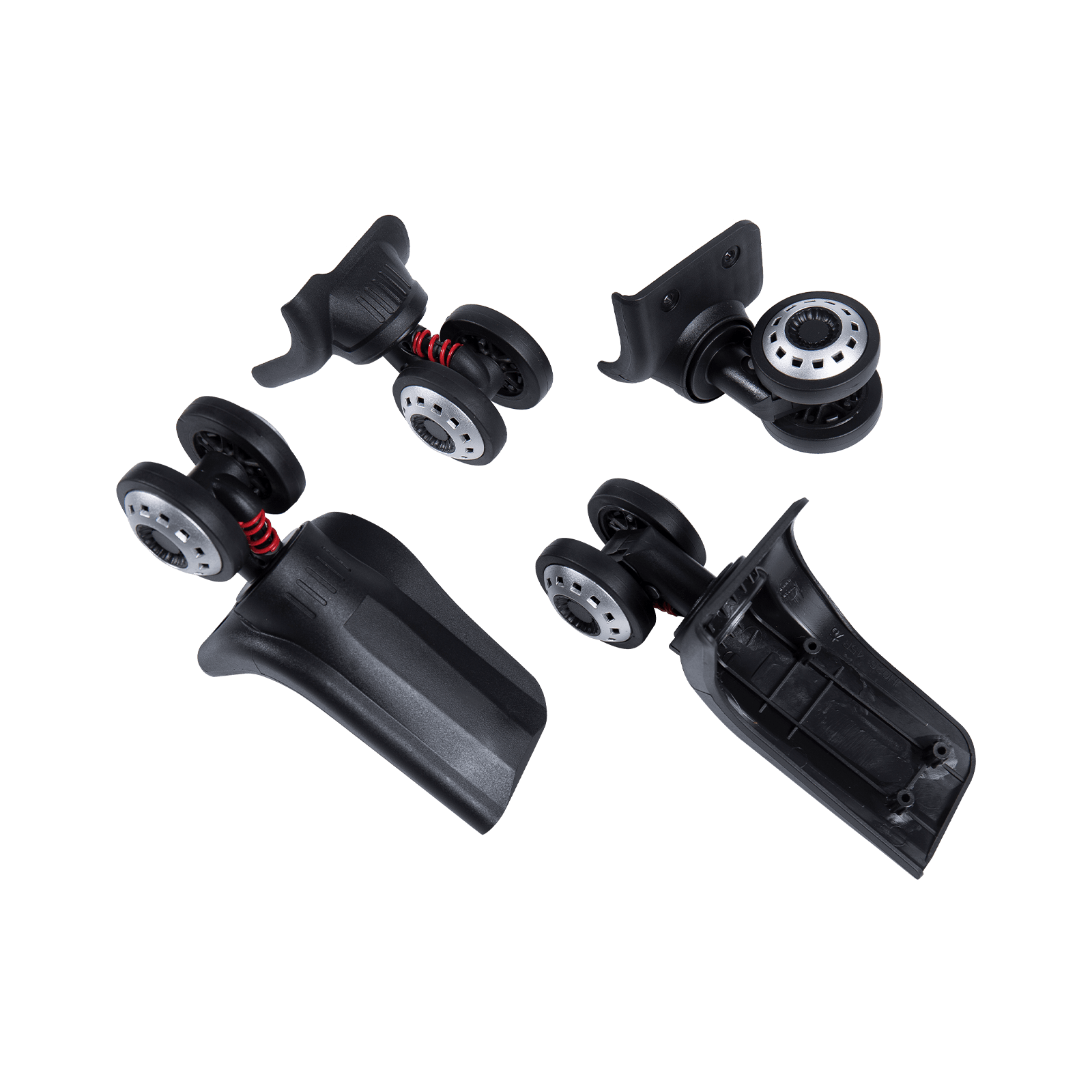When selecting and designing Universal Luggage Wheels, the balance between wheel size, load-bearing capacity, and luggage volume is very important, as they directly affect the mobility, comfort, and durability of the luggage. Here are a few key factors for the balance of these three:
For lightweight small cabin luggage or business bags, the wheel size should be small, generally between 50mm-70mm. Small wheels can reduce the overall weight of the luggage, ensuring ease of carrying and storage. However, small wheels may not perform well on some rough surfaces, so softer materials (such as rubber, polyurethane) are usually used to provide better grip and comfort.
For larger travel or checked luggage, the wheel size is usually larger, generally 80mm-100mm or larger. Large wheels can better withstand heavier loads and provide better stability and rolling performance on uneven, rugged surfaces. Larger wheels help to distribute weight and reduce friction, making large luggage easier to move.
Larger suitcases require larger wheels to bear more weight and provide better rolling performance, while small suitcases use smaller wheels to maintain lightness and easy storage.

The load-bearing capacity of universal luggage wheels is directly related to the wheel material, bearing design and wheel structure. Generally speaking, hard wheels (such as polyurethane) can provide strong load-bearing capacity, but may sacrifice some smoothness of sliding; while softer wheels (such as rubber) have average load-bearing performance, but have advantages in stability and quietness.
The weight of the suitcase and the items to be carried (such as clothing, electronic products, etc.) require higher load on the wheels. Large suitcases usually carry more items, and the wheels need to have a higher load-bearing capacity to avoid deformation, wear or damage during use. For medium-sized suitcases, the wheel load-bearing capacity can be moderate, but still need to ensure sufficient durability.
The size and design of the wheel should match the load-bearing capacity of the suitcase. Larger suitcases usually require wheels with stronger load-bearing capacity, while lightweight small suitcases can be equipped with wheels with moderate load-bearing capacity.
These materials are suitable for luggage that carries heavier items because of their high hardness and load-bearing capacity. Wheels made of hard materials roll smoothly but may make louder noises on uneven surfaces.
Soft wheels have better grip and comfort, and are suitable for lighter luggage, especially on uneven, slippery or rough surfaces, where soft wheels can provide better driving stability.
When choosing the material of the wheels, consider the weight of the luggage and the use scenario. For heavier luggage, use hard, load-bearing wheels; while lightweight luggage can use soft, more comfortable wheels.
Four-wheeled luggage usually provides better balance and flexibility, and can rotate 360 degrees, which is ideal for fast movement and turning in tight spaces. The distribution of the four wheels can balance the weight of the luggage and avoid excessive pressure on a single wheel, which is suitable for larger luggage.
The two-wheel design is usually stronger and has a stronger load-bearing capacity, which is suitable for heavier luggage. Since each wheel carries a large amount of weight, it is suitable for luggage with heavier loads and is usually used for larger and heavier checked luggage.
The four-wheel design is suitable for lighter luggage, which is easy to turn and flexible to move; the two-wheel design is suitable for heavier luggage, providing greater load-bearing capacity and durability.
The rolling performance of the wheel will be affected by its size, material and design. Large wheels are generally able to perform better on uneven surfaces, while small wheels are more suitable for smooth surfaces. For large luggage, you need to choose large wheels with better rolling performance to ensure that there is no excessive friction during long-distance transportation, avoiding adding difficulties to travel.
Small wheels may not perform well on large luggage, especially when the luggage is heavy, so you need to choose larger wheels to ensure smoother rolling. For small luggage, using smaller wheels can reduce weight and make travel lighter.
Larger luggage uses large wheels to ensure better rolling performance, while small luggage can use small wheels to remain light and flexible.
The coordination between the size, load-bearing capacity and luggage volume of universal luggage wheels needs to take into account factors such as the weight of the luggage, the use environment, rolling performance and comfort. Larger luggage requires larger wheels to improve load-bearing capacity and stability; while smaller luggage can use smaller and lighter wheels for easier storage and movement. Reasonable wheel size and material selection can ensure that the luggage has a good use experience in different environments.




 Español
Español











